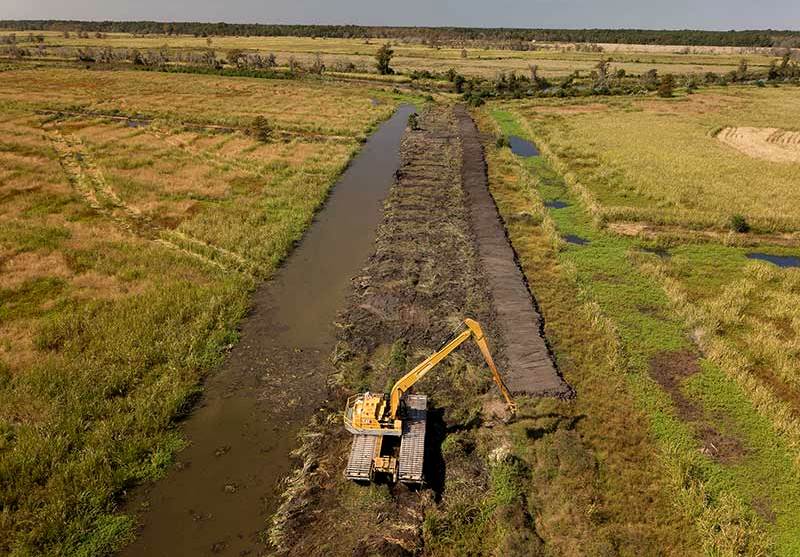On January 6, 2021, the U.S. Fish and Wildlife Service (USFWS) awarded a $1 million National Coastal Wetlands Conservation Grant to the South Carolina Department of Natural Resources (SCDNR) for wetland restoration on the Lower Middleton complex at Samworth Wildlife Management Area in Georgetown County.
The USFWS grant—along with $895,215 in match funds from Ducks Unlimited, SCDNR, Open Space Institute, and Audubon South Carolina—will allow for the restoration of management capabilities on 270 acres of managed tidal wetlands.
The Lower Middleton complex has been subject to extensive damage beginning with the historic flood of 2015 followed by a succession of hurricanes, which resulted in the breaching of the dikes and significant erosion damage to the already tenuous dike system.
Activities to be performed include installing four rice trunks, 13,425 linear feet of interior canal restoration, re-topping of 7,780 linear feet of dike, construction of 1,460 linear feet of interior setback dike, and enhancement of 2,560 linear feet of berm along eroded dikes.
“The restoration of the Lower Middleton complex represents a major step forward in the restoration of total management capability of the managed wetlands at Samworth,” said Emily Cope, Deputy Director of Wildlife and Freshwater Fisheries for SCDNR.
“The project complements the restoration of the Rabbit Island unit and planned work on the adjacent Upper Middleton complex, as well as the extensive restoration and maintenance work conducted by our Upper Coastal Waterfowl Project staff at Samworth. We are grateful to Ducks Unlimited, Open Space Institute, and Audubon South Carolina for their support in making the project a reality,” she concluded.
The USFWS grant was completed and submitted through a partnership between Ducks Unlimited and SCDNR.
This project will enhance waterfowl habitat and improve habitat for other game and nongame species, including wading birds, shorebirds, reptiles, and amphibians.
Construction is expected to begin in February of 2021.
Photo courtesy of SCDNR.

